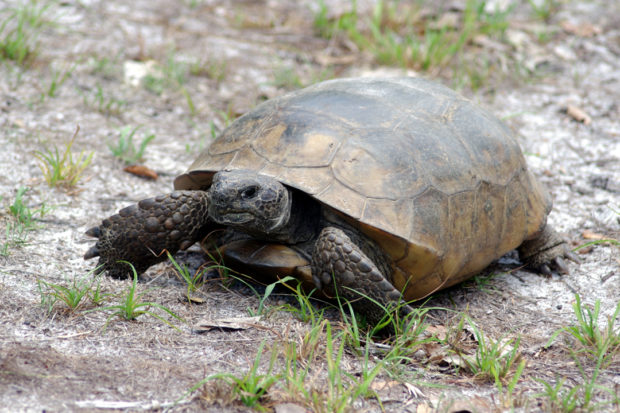We have much more to do and your continued support is needed now more than ever.
Climate Policy Stifled, Wildlife Imperiled by Bioenergy
How Legislators are Proposing Fixes to the Bioenergy Problem

The conversation on climate and renewable energy policy in Congress is shifting, and it could have a big impact on wildlife. The first iterations of climate legislation have focused on reducing greenhouse gas pollution from fossil fuels. However, savvy legislators on both sides of the aisle have recognized that there is another energy source that produces carbon pollution as well: bioenergy. In response, these policy-makers are making sure that emissions from bioenergy are accounted for as well.
Plants and waste material can be used to generate “bioenergy” in the form of liquid fuel, electricity, or heat. Government incentives to deploy renewables can spur the adoption of bioenergy (as can disincentives specific to fossil energy use, such as some carbon tax bills).
If done without carbon accounting and sustainability safeguards, bioenergy can have widespread and severe repercussions. Recent cases of runaway policy have shaped modern perspectives on the environmental tradeoffs of bioenergy.
Case Studies: Policy Impacts on Wildlife
The United Kingdom (UK) established a state-of-the-art renewable energy policy a decade ago, with strong incentives to switch from fossil fuels. Their efforts backfired, though, when the policy gave rise to a heavy reliance on burning biomass in former coal plants to generate electricity. The UK subsidies drove a market for wood pellets, sourced mostly from trees from the Southeastern U.S. These trees will take decades to grow back, resulting in increased carbon emissions for decades—greatly undermining the climate goals of the UK policy. Moreover, the region from which they source—the southeast United States—is a global biodiversity hotspot that is noted for its species richness as well as its escalating loss of habitat. The industry has been documented harvesting from sensitive harvest sites in the region. This puts additional strain on species of concern such as the gopher tortoise, bobwhite quail, and eastern spotted skunk. (See National Wildlife Federation’s work on Sustainable Bioenergy)
The mandate to blend corn ethanol into gasoline has had similar unintended consequences in the US. The demand for corn ethanol under the Renewable Fuels Standard prompted a major uprooting of America’s grasslands to be used for agriculture. Not only did this land use change cause very large emissions of carbon that had been stored in the prairie ecosystems, it caused a loss of habitat for many species. Habitat quality and availability has severely declined in a region that is the breeding ground for as much as 60 percent of North America’s waterfowl such as ducks, egrets, and whooping cranes. (See National Wildlife Federation’s work on the ethanol mandate)
In both cases, policies that gave rise to bioenergy not only increased carbon pollution, but undermined investments in genuinely clean technologies such as advanced biofuels or wind and solar for electricity.

The New Paradigm for Bioenergy
Learning from these mistakes, recent proposals in Congress increasingly reflect a new outlook for bioenergy. They recognize that not all bioenergy is a suitable substitute for fossil fuels and that harvesting from sensitive habitat is not a characteristic of clean energy.
Here are a few of the policies introduced (none are law) and how they treat bioenergy:
- Carbon pricing: Rep Curbelo (R-FL) introduced the MARKET CHOICE Act to put a price on carbon pollution in the 115th Congress. The price applies to fossil fuels as well as a select list of other sources of carbon pollution, including ethanol and biomass for electricity. There is a provision that gives the EPA Administrator authority to review and remove fuel sources subject to the carbon price if national emissions become insignificant.
- Clean energy standards: Rep Tulsi Gabbard (D-HI) proposed a transition to 100% clean energy by 2035 last year in the Off Fossil Fuels for a Better Future Act. The bill requires that retail electricity suppliers increase their sourcing of clean energy over time, but does not include bioenergy in that transition.
- Financial incentives and tax credits: Rep Jared Polis’ (D-CO) introduced the 100 by ’50 Act in 2017. The policy provided grants, loans, and tax credits for renewable energy, but was specific to exclude biomass and only include benefits for second generation advanced biofuels.
- Transitioning to better biofuels: Rep. Peter Welch (D-VT) and Sen. Tom Udall (D-NM) introduced the GREENER Fuels Act last year in the House and Senate, respectively. It would have put limits on the most polluting and destructive sources of biofuels, created a better pathway for more sustainable alternatives to succeed in the market, and helped prevent additional environmental damage in the future.
These policies reflect a new strategy for the shift to a clean energy economy. While there are ways to thoughtfully include bioenergy in our national energy transition, any government support should make sure that all market signals benefit wildlife and the climate.
Support our work to advocate for better bioenergy policies that protect the native grassland prairies and forests that wildlife depend on:
Donate!





















